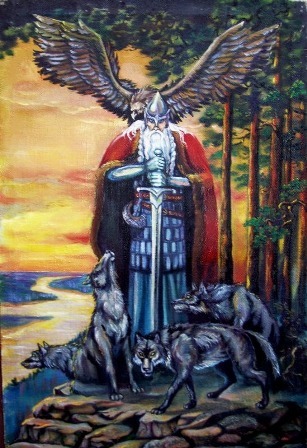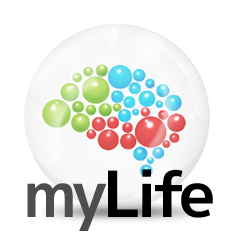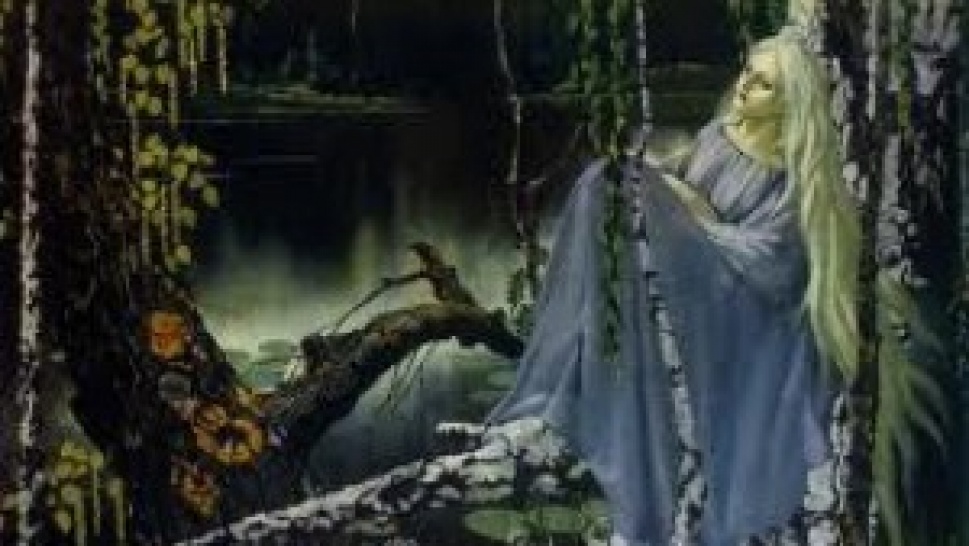MOST HIGH - Slavic god, cosmic Absolute, which combines all the Gods, and the whole universe in a single unit. Name of the Almighty - OUM. All other gods - manifestations (hipostasi) and subliènosti Supreme.
Czernobog
In Slavic mythology Czernobog (Zernebogh, Zlebog, Crnobog, Black God) deity that brought evil, evil god, the god of darkness. About him the records left chronicler Helmold. Helmold notes that Slavs believe that everything good comes from a good God, and the evil of evil.
Bjelobog
Bjelun, in Slavic mythology, the white god. Brightly he sowed, he led the men lost on the way and helped them out of the woods. His admirers was rewarded smothering them with gold. They said: "Forests are dark without Bjeluna" and that in his mercy the man who made his fortune and failed. Predtsavljen as an old man with a long, flowing white beard, in a white robe. Nights rested or hid and only day allowed his admirers to see him.
Triglav
In Slavic mythology Triglav Triune God. It combines into a single unit three hipostazije beings: Java, Nav and rights. Triglav is the embodiment of the room where there is a living man. Man is given freedom of will and the ability to choose his own path - correct or incorrect. 
Morana
In Slavic mythology, the name Moran regarding praindijske word "mara" meaning power die. The term "morena" means direful snow avalanches and glaciers. Morana is the goddess of death and winter, appears in different form. The most common figure of a beautiful girl with black hair and very white skin and wolf canine claws on his hands. Many interpreted that her other character that Baba Yaga (Baba Ruga, Baba Winter), ugly old witch. Old Slavs believed that all winter storms, cold, snow, ice and death come from Morane, and it was called the goddess of death, human, animal and plant life. In some Slavic peoples there is a custom of burning Morane or Babe Ruge in a sign that winter may be over. In Dalmatia and Slovenia, this custom is still maintained in the form of carnival parades with the doll Morane on the forehead, which is burned in the presence of a multitude of nations. Moranina doll is used in rituals related to death and resurrection in the countryside or in the invocation of rain. In Eastern Slavs, Morana is the goddess of fertility, protector of women and women's work in particular spinning. Her wooden idol set up by Prince Vladimir in Kiev on a hill near the idol of Perun and the other gods. In the north of Russia called her and Moku¹a and legends he portrayed as a woman of the big head and long nails. Her cult, judging from place names, was widespread and the Western Slavs.
Stribog
Stribog (Stribor) is the Slavic god of wind and trees.
Svarog
Svarog, according to Russian legend, the god of fire and the sky, creator of all things in heaven and earth, the first deity of Sun with Slavs. The root of the Indo-ting sun + continuation og (CERT th = Hall, BRL th, vortex-th). Accordingly Svarog means place of the sun, the sky, personified means the god of the sky, the sun god. According to some historians, he has two sons: Dazhbog or Dabog sun god (the Ipatskim chronicles under 1114.god.) And Svarozich. Svarog is associated with the sky, forging iron and fire. Comparing it with the Greek Uranus TV and Hephaestus (god's blacksmith). According to Russian legend Svarog coined the sun and put it in the sky. In the Baltic Slavs significantly worship Svarogich - Radgosta. Titmar states that in Radgostovom temple at Redarijana, among many idol gods exist and one named Zuarasici - Svaro¾iæ (god of fire and the domestic hearth) that the nation's most revered. To him pridono¹ene victims - men and domestic animals. In the temple are the idols kept and flags that were out of the temple stood just in case a war campaign. Then they were worn by pedestrians. Svaro¾iæ wearing a hat against the heat of the day, in his right hand a cornucopia, on the left side of the sword, which he hacked demon, racing on his horse.
Perun
Perun Baltic (Perkunas) and the Slavic god of thunder and lightning (thunder) is similar to Scandinavian Thor, Donar in Germanic mythology, Parjanyu in Indian mythology or Taranis in Celtic mythology. Perun was the chief deity of the Parthenon Slavic gods.
READ MORE: http://slavialand.org/slavicgods.htm




Share the News